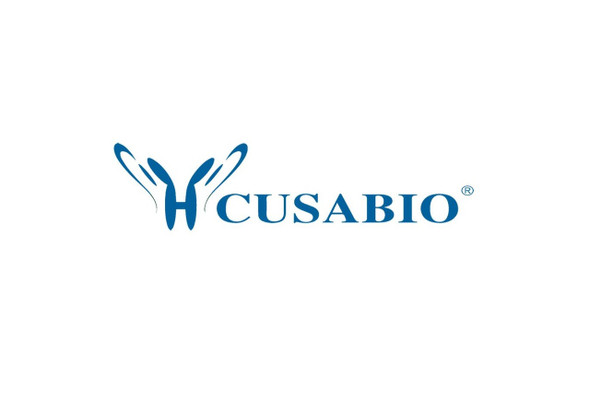Cusabio Human Recombinants
Recombinant Human DDB1- and CUL4-associated factor 7 (DCAF7) | CSB-EP026056HUb0
- SKU:
- CSB-EP026056HUb0
- Availability:
- 3 - 7 Working Days
Description
Recombinant Human DDB1- and CUL4-associated factor 7 (DCAF7) | CSB-EP026056HUb0 | Cusabio
Alternative Name(s): WD repeat-containing protein 68 WD repeat-containing protein An11 homolog
Gene Names: DCAF7
Research Areas: Signal Transduction
Organism: Homo sapiens (Human)
AA Sequence: MSLHGKRKEIYKYEAPWTVYAMNWSVRPDKRFRLALGSFVEEYNNKVQLVGLDEESSEFICRNTFDHPYPTTKLMWIPDTKGVYPDLLATSGDYLRVWRVGETETRLECLLNNNKNSDFCAPLTSFDWNEVDPYLLGTSSIDTTCTIWGLETGQVLGRVNLVSGHVKTQLIAHDKEVYDIAFSRAGGGRDMFASVGADGSVRMFDLRHLEHSTIIYEDPQHHPLLRLCWNKQDPNYLATMAMDGMEVVILDVRVPCTPVARLNNHRACVNGIAWAPHSSCHICTAADDHQALIWDIQQMPRAIEDPILAYTAEGEINNVQWASTQPDWIAICYNNCLEILRV
Source: E.coli
Tag Info: N-terminal 10xHis-tagged
Expression Region: 1-342aa
Sequence Info: Full Length
MW: 45.0 kDa
Purity: Greater than 85% as determined by SDS-PAGE.
Relevance: Involved in craniofacial development. Acts upstream of the EDN1 pathway and is required for formation of the upper jaw equivalent, the palatoquadrate. The activity required for EDN1 pathway function differs between the first and second arches . Associates with DIAPH1 and controls GLI1 transcriptional activity. Could be involved in normal and disease skin development. May function as a substrate receptor for CUL4-DDB1 E3 ubiquitin-protein ligase complex.
Reference: DNA sequence of human chromosome 17 and analysis of rearrangement in the human lineage.Zody M.C., Garber M., Adams D.J., Sharpe T., Harrow J., Lupski J.R., Nicholson C., Searle S.M., Wilming L., Young S.K., Abouelleil A., Allen N.R., Bi W., Bloom T., Borowsky M.L., Bugalter B.E., Butler J., Chang J.L. , Chen C.-K., Cook A., Corum B., Cuomo C.A., de Jong P.J., DeCaprio D., Dewar K., FitzGerald M., Gilbert J., Gibson R., Gnerre S., Goldstein S., Grafham D.V., Grocock R., Hafez N., Hagopian D.S., Hart E., Norman C.H., Humphray S., Jaffe D.B., Jones M., Kamal M., Khodiyar V.K., LaButti K., Laird G., Lehoczky J., Liu X., Lokyitsang T., Loveland J., Lui A., Macdonald P., Major J.E., Matthews L., Mauceli E., McCarroll S.A., Mihalev A.H., Mudge J., Nguyen C., Nicol R., O'Leary S.B., Osoegawa K., Schwartz D.C., Shaw-Smith C., Stankiewicz P., Steward C., Swarbreck D., Venkataraman V., Whittaker C.A., Yang X., Zimmer A.R., Bradley A., Hubbard T., Birren B.W., Rogers J., Lander E.S., Nusbaum C.Nature 440:1045-1049(2006)
Storage: The shelf life is related to many factors, storage state, buffer ingredients, storage temperature and the stability of the protein itself. Generally, the shelf life of liquid form is 6 months at -20?/-80?. The shelf life of lyophilized form is 12 months at -20?/-80?.
Notes: Repeated freezing and thawing is not recommended. Store working aliquots at 4? for up to one week.
Function:
Involvement in disease:
Subcellular Location:
Protein Families:
Tissue Specificity:
Paythway:
Form: Liquid or Lyophilized powder
Buffer: If the delivery form is liquid, the default storage buffer is Tris/PBS-based buffer, 5%-50% glycerol. If the delivery form is lyophilized powder, the buffer before lyophilization is Tris/PBS-based buffer, 6% Trehalose, pH 8.0.
Reconstitution: We recommend that this vial be briefly centrifuged prior to opening to bring the contents to the bottom. Please reconstitute protein in deionized sterile water to a concentration of 0.1-1.0 mg/mL.We recommend to add 5-50% of glycerol (final concentration) and aliquot for long-term storage at -20?/-80?. Our default final concentration of glycerol is 50%. Customers could use it as reference.
Uniprot ID: P61962
HGNC Database Link: N/A
UniGene Database Link: N/A
KEGG Database Link: N/A
STRING Database Link: N/A
OMIM Database Link: N/A









